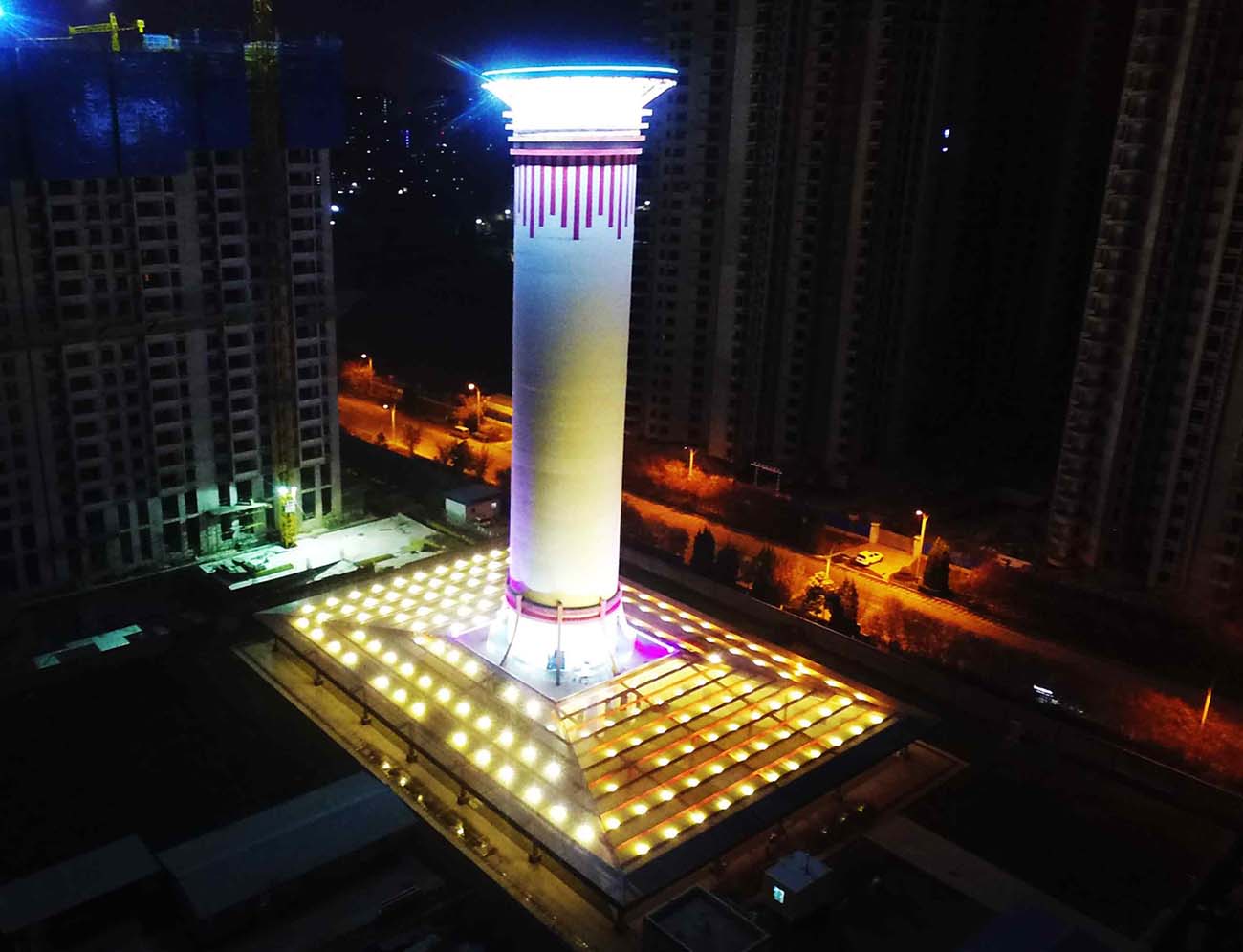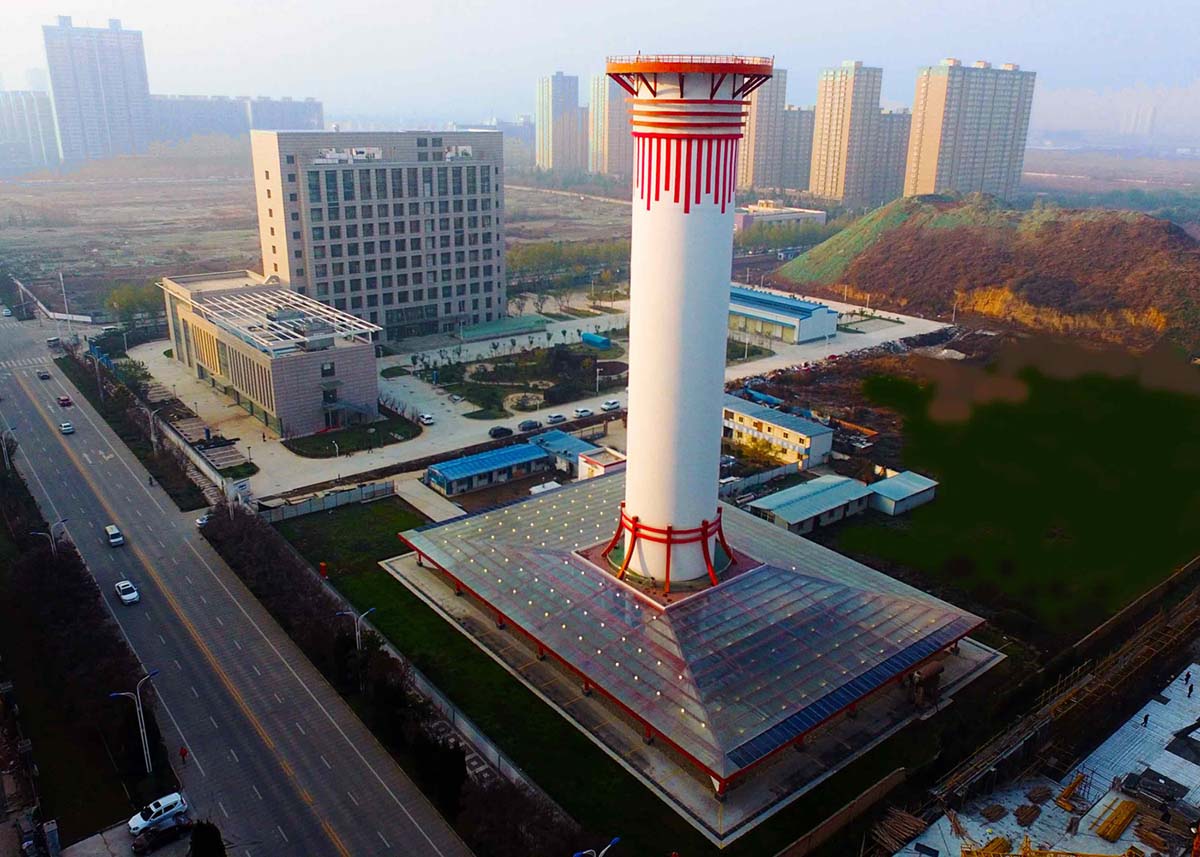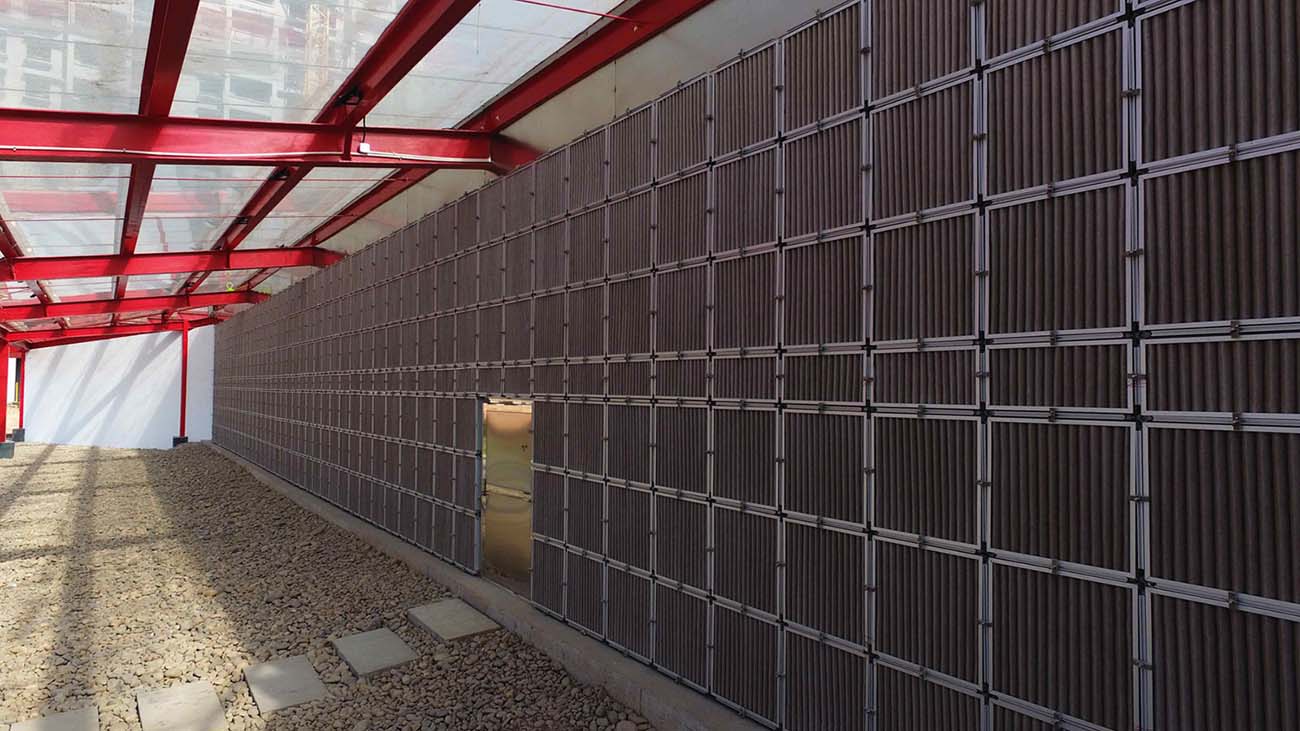

Inside a chimney that releases filtered air, part of a pilot project to reduce smog in Xi'an, China. (Image by David Cyranoski/Nature)
A 60-metre-high chimney stands among a sea of high-rise buildings in one of China’s most polluted cities. But instead of adding to Xian’s smog, this chimney is helping to clear the air. The outdoor air-purifying system, powered by the Sun, filters out noxious particles and billows clean air into the skies. Chinese scientists who designed the prototype say that the system could significantly cut pollution in urban areas in China and elsewhere.
The technology has excited and intrigued researchers - especially in China, where air pollution is a daily challenge. Early results, which are yet to be published, are promising, says the project's leader Cao Junji, a chemist at the Chinese Academy of Sciences’ Key Laboratory of Aerosol Chemistry and Physics in Xian in central China. Other investigators include David Pui at the University of Minnesota, USA and Wenquan Tao at the Xi’an Jiaotong University, China.
"This is certainly a very interesting idea," says Donald Wuebbles, an atmospheric scientist at the University of Illinois at Urbana-Champaign, who has heard about the system but not seen it in action. "I am not aware of anyone else doing a project like this one."
The prototype, built with US$ 2 million in funding from the provincial government, has also caught the attention of the president of the Chinese Academy of Sciences, Bai Chunli, who visited the site last month. Cao says Chinese leaders are eager for innovative solutions to air pollution because it creates such a widespread public-health problem. The Global Burden of Disease Study for 2015, a comprehensive effort to map the world's diseases, found that pollution contributed to 1.1 million premature deaths in China in that year alone.
Cao has submitted a proposal for another 300-metre tower in Xian. He is also negotiating proposals with cities in Beijing, Hebei and Henan.
But the technology has its sceptics, who say that there are much cheaper ways to reduce air pollution.
Stack effect
The concrete chimney sits atop a large open structure with a glass roof. Solar radiation hitting the glass heats the air, causing it to rise towards the base of the tower. The air then passes through a wall of industrial filters before billowing out the chimney. The system is inspired by renewable-energy power plants that generate electricity from solar heat.
"This is a very well-designed and well-made prototype," says Renaud de Richter, a chemical engineer at Ecole Nationale Supérieure de Chimie de Montpellier, who has worked on solar-energy towers. Richter says Cao’s success could help to convince investors to support other applications based on the flow of solar-powered air through chimneys, a technology known as solar updraft.
Pollution peaks during winter and Cao chose this time to conduct his first test of the systems’ air filters over two weeks in January. At the tower and at 10 monitoring stations across a 10 square-kilometre area, he placed monitors that measured particulate matter under 2.5 micrometres in diameter (PM2.5), a type of pollution that has plagued Chinese cities.
Cao found that the tower expels between 5 million and 8 million cubic metres of filtered air a day in winter. During the study period, the surrounding air monitors registered a 19% decrease in PM2.5 concentrations compared with monitors in other parts of the city. Cao is preparing the results for peer review.
Cao says the prototype’s impact was local, so he proposes creating arrays of about half a dozen larger chimneys distributed around urban centres. He has also designed a 500-metre-tall tower. "The influence of one system is small. We need multiple systems so that significant reduction of air pollution concentration can be achieved," he says.
Cheaper alternatives
Neil Donahue, who studies atmospheric particles at Carnegie Mellon University in Pittsburgh, Pennsylvania, says there is little doubt that pulling a large volume of air through high-efficiency particulate filters will clean it. But Donahue wonders whether the benefits will be worth the environmental damage caused by building and running such facilities. "I would like to see an assessment of the power and resource use for the filtration," he says. Turning the same amount of power into clean electricity, or not emitting the pollution in the first place, might achieve the same goal of reducing pollution, says Donahue.
Wuebbles also worries that the chimney would filter only particulate matter and not precursors to particulate matter, such as sulfur dioxide gas and nitrogen oxides, which are also dangerous to human health, or secondary gaseous pollutants such as ozone. "So while the sky may look cleaner, the air quality can still be really awful," he says.
Cao says that the system already removes nitrogen oxides, one of the major precursors in the formation of ultra-fine particles and ozone. He also says that concerns about the economics are overblown. He estimates the running costs of the pilot project to be about $30,000 a year.
Despite some reservations, researchers — such as atmospheric scientist Jose Jimenez, at the University of Colorado Boulder - see an advantage in pursuing the technology. "I’d definitely say it is worth exploring it more, though I am not convinced either way at this point," he says. (Nature)

Night view of HSALSCS (Image by IEECAS)

Overlook of HSALSCS (Image by IEECAS)

One side of the filtration system (Image by IEECAS)

86-10-68597521 (day)
86-10-68597289 (night)

86-10-68511095 (day)
86-10-68512458 (night)

cas_en@cas.cn

52 Sanlihe Rd., Xicheng District,
Beijing, China (100864)

